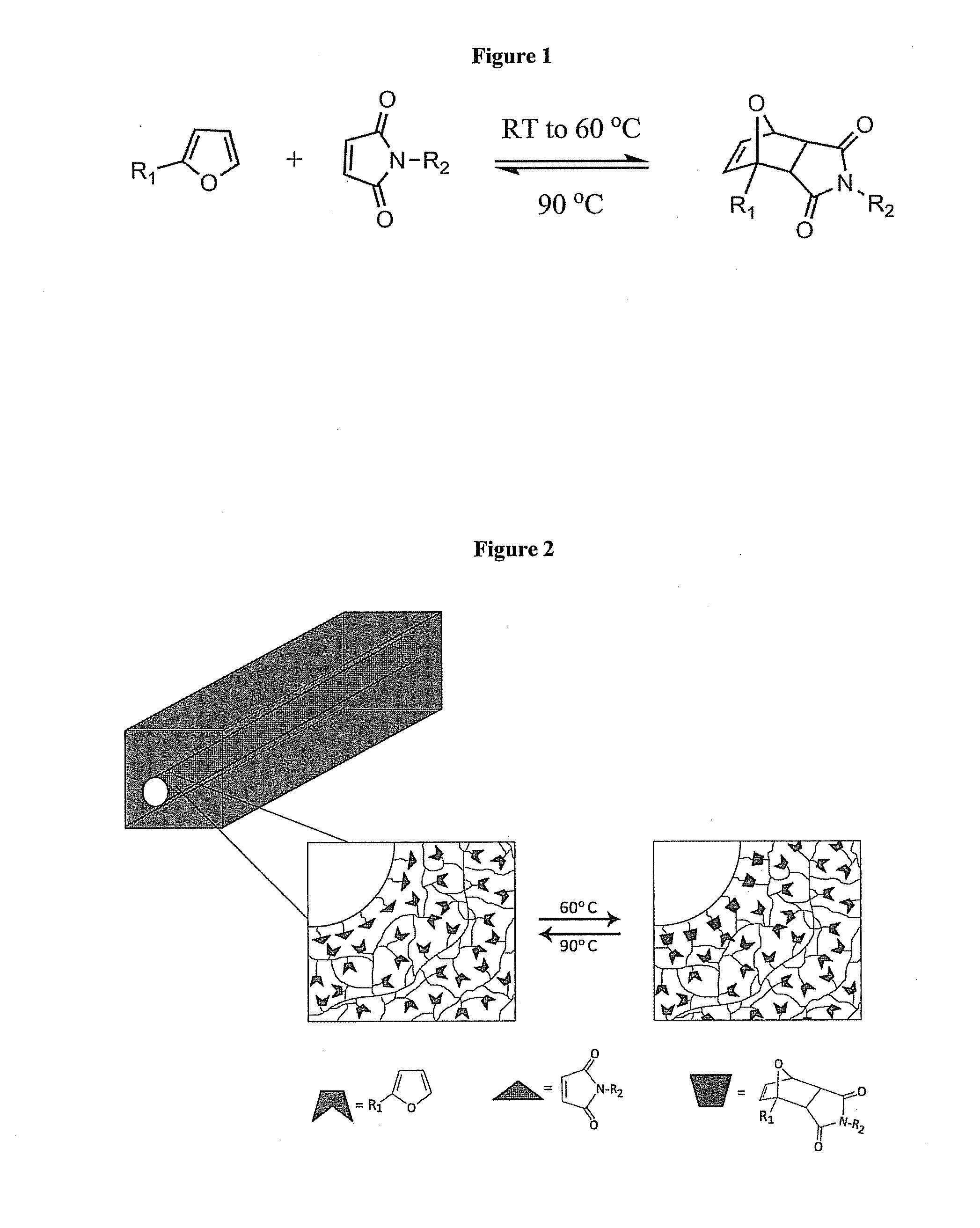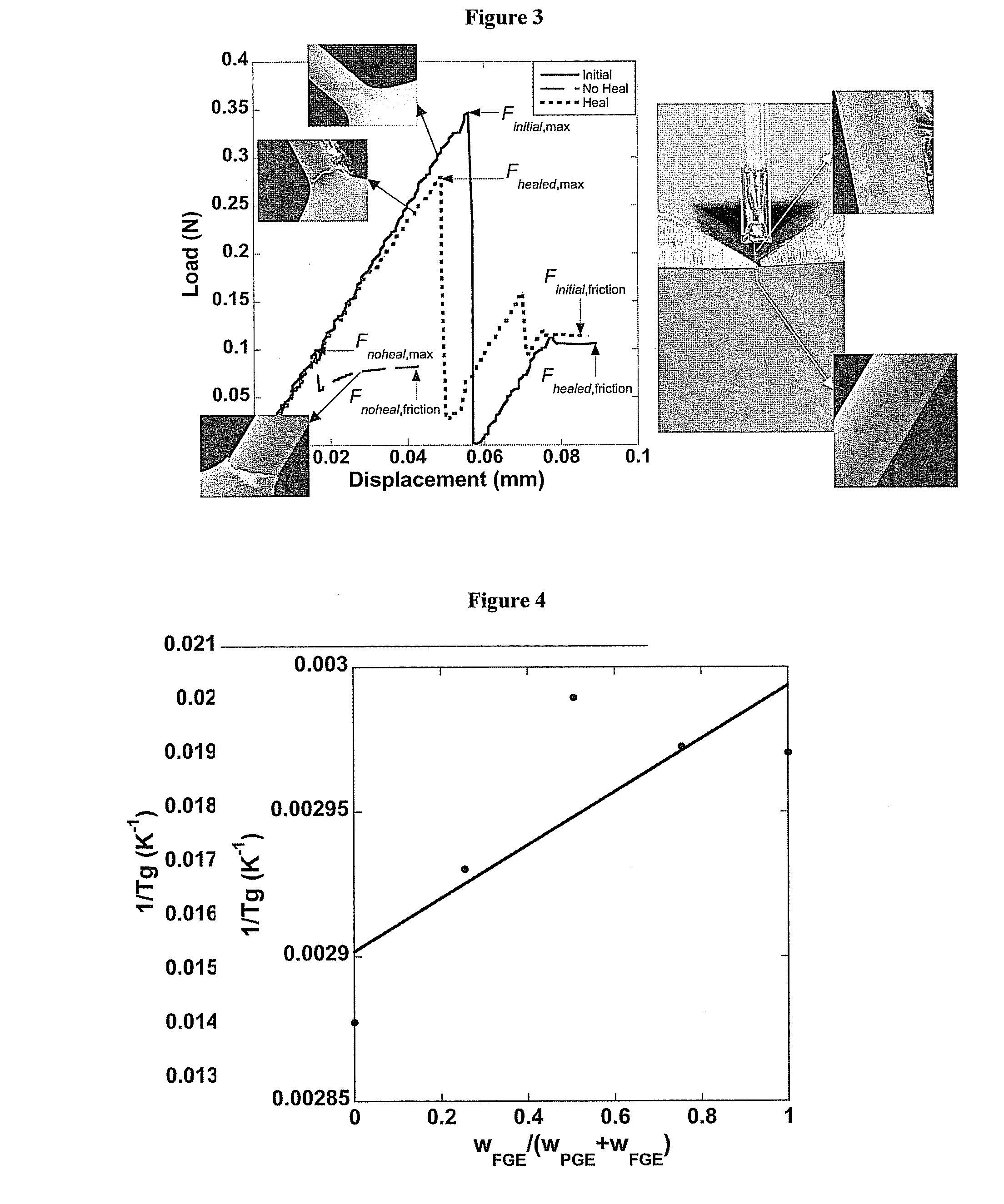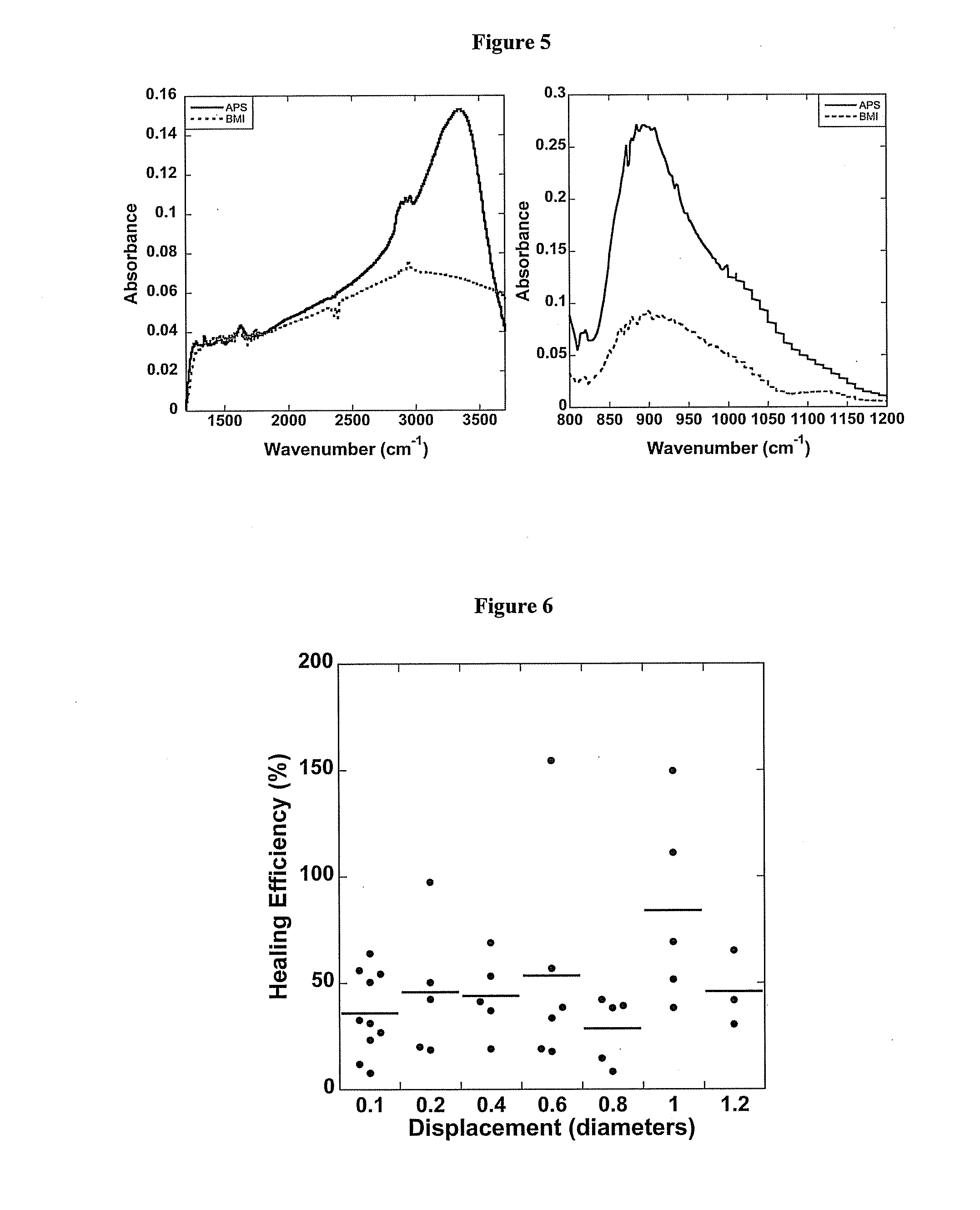Remendable interfaces for polymer composites
a polymer composite and interface technology, applied in the field of new composite systems, can solve problems such as mechanical failure of composites, differences in properties, and growth of cracks in such cracks
- Summary
- Abstract
- Description
- Claims
- Application Information
AI Technical Summary
Benefits of technology
Problems solved by technology
Method used
Image
Examples
example 1
[0084]Single Fiber Microdroplet Pull-out Test
[0085]The healing ability of the fiber-resin interface was investigated with single fiber microdroplet pull-out testing. As shown in FIG. 3, a droplet of resin is cured on a single glass fiber. The droplet is then loaded underneath two razor blades. The fiber is held static while the blades are pulled down at a rate of 0.01 mm min−1 until the droplet is delaminated from the fiber (Finitial,max) and the droplet slides along the fiber (Finitial,friction). Following failure, the system was healed for 1 hour at 90° C. and 12 hours at 22° C. and then tested to failure again (Heal curve). The No Heal curve shows the behavior of a specimen following failure that is left at room temperature (22° C.). Healing efficiency is defined by the following equation:
η=(Fhealed,max-Fhealed,friction)-(Fnoheal,max-Fnoheal,friction)(Finitial,max-Finitial,friction)-(Fnoheal,max-Fnoheal,friction)(1)
As shown in FIG. 3, Finitial,max, Fhealed,max, and Fnoheal,max co...
example 2
[0108]Interface Healing of Furan Functionalized Polymers Using a Maleimide Solution
[0109]In this example, the polymer matrix was functionalized with furan reactive groups as described above but the reinforcing material was not functionalized. Instead, a solution of 1,1′ -(methylenedi-4,1-phenylene)bismaleimide (BMI) in N,N′-dimethylformamide (DMF) was prepared for use as the healing agent.
[0110]The composite specimen was prepared in accordance with ASTM D 5045-99 except for the introduction of a crack-arresting hole 3.5 mm from the notched end. All mechanical testing was performed on an Instron 8872. The crack-arresting hole allows for improved crack realignment during healing. A pre-crack was formed at the base of the notch by lightly tapping with a sharp razor blade. Once the specimens were fractured, the crack was filled with 10 μl of healing agent using a microsyringe and left to heal at room temperature under minimal pressure for 12 hours. After healing, specimens were loaded t...
PUM
| Property | Measurement | Unit |
|---|---|---|
| temperature | aaaaa | aaaaa |
| droplet diameter | aaaaa | aaaaa |
| diameter | aaaaa | aaaaa |
Abstract
Description
Claims
Application Information
 Login to View More
Login to View More - R&D
- Intellectual Property
- Life Sciences
- Materials
- Tech Scout
- Unparalleled Data Quality
- Higher Quality Content
- 60% Fewer Hallucinations
Browse by: Latest US Patents, China's latest patents, Technical Efficacy Thesaurus, Application Domain, Technology Topic, Popular Technical Reports.
© 2025 PatSnap. All rights reserved.Legal|Privacy policy|Modern Slavery Act Transparency Statement|Sitemap|About US| Contact US: help@patsnap.com



